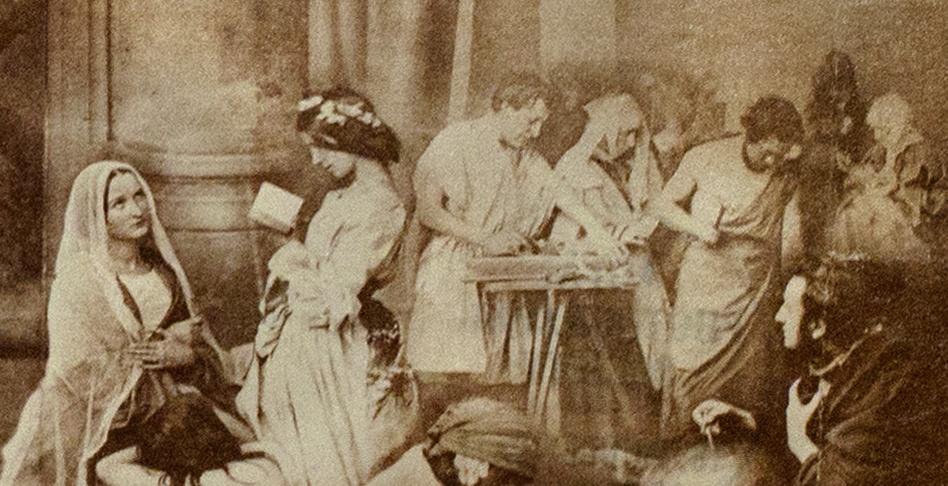Garage Centre for Contemporary Culture will be hosting an exhibition of
Oscar Gustave Rejlander’s work, The Two Ways of Life (1857), to
coincide with Portfolio Review Russia, which will also be held at
Garage.
Oscar Gustave Rejlander (1813-1875) was part of a generation of radical, young
photographers working in the 19th century. Rejlander was also an important
pioneer of photomontage, a technique that was later embraced by artists as well
as photographers. Photomontage has been used by some of the most influential
artists of the 20th century. It is a stylistic element that has been utilised
by movements that include the Russian avant-garde, Cubism, Futurism,
Surrealism, Pop Art, and that continues to be popular among many contemporary
artists.
The Two Ways of Life is an early photomontage of thirty prints, based
on Raphael’s School of Athens (1510-11), an allegory of vice and
virtue. Typically Victorian, Rejlander’s work shows two apprentices choosing
opposite paths in life: a path of immediate pleasure and sin contrasted to a
path of education, trade and charity. The work will be shown together with a
slideshow of photomontages created by other artists during the course of the
20th century.
The use of such a new technique to present a serious morale subject was highly
unusual and innovative for this period. The work was even branded ‘unbearable’
for its expressiveness when exhibited in 1858, and partially covered with a
cloth. It was also presented in a large-scale format, more frequently used for
allegorical painting, and even purchased for the Royal Collection. In this way,
its status was raised to that of a work of art rather than simply a scientific
process of documentation.
Rejlander’s The Two Ways of Life, his composite and constructed
photography techniques, and use of photomontage continue to influence
contemporary photography today. This form of working was particularly popular
with artists active throughout the 1990s, including David Hockney, Jeff Wall,
Calum Colvin, Gregory Crewdson, Scott MacFarland, Hannah Starkey and Clare
Strand.
Artist’s Biography
Oscar Gustave Rejlander (1813-1875) was born in Sweden and is
widely regarded as the ‘father of art photography’. Rejlander received his
general education in Sweden, and studied painting and sculpture in Rome. After
considerable travel he settled in England, where from 1853 he practiced
photography. Rejlander rejected contemporary conceptions of photography as a
scientific or technical medium. In his efforts to elevate photography to the
status of a fine art, he made photographs that imitated painting. He looked to
the example of the Old Masters for their use of composition and pose, and often
set up his own elaborate compositions in his studio. In many of his works he
sought painterly effects by combining and superimposing several negatives to
make one print, resulting in a final image that moved beyond the results
achieved by traditional photography printing techniques. Rejlander was well
known for his ability to capture an emotion or sentiment in his work. A series
of photographs of facial expressions and gestures made by Rejlander was used by
Charles Darwin in his Expression of the Emotions in Man and
Animals (1872).
Although he enjoyed a period of critical acclaim, Rejlander died impoverished.
However, his influence extended for decades in the form of increasingly
frequent debates regarding the merits of pictorialism, painterly effects and
the value of more sharply detailed work. A large collection of Rejlander’s work
is currently on display at The National Media Museum, Bradford.

